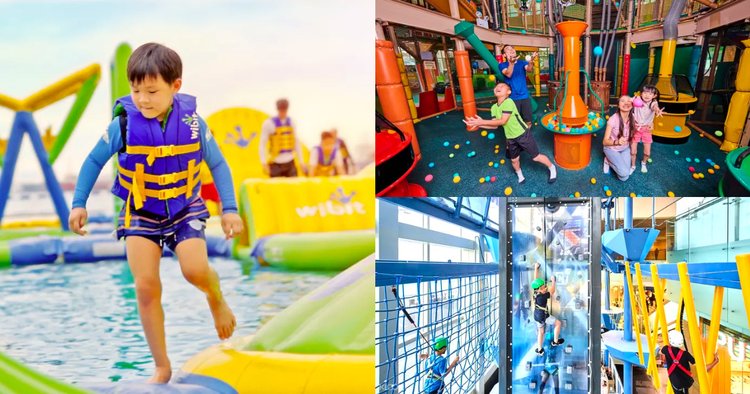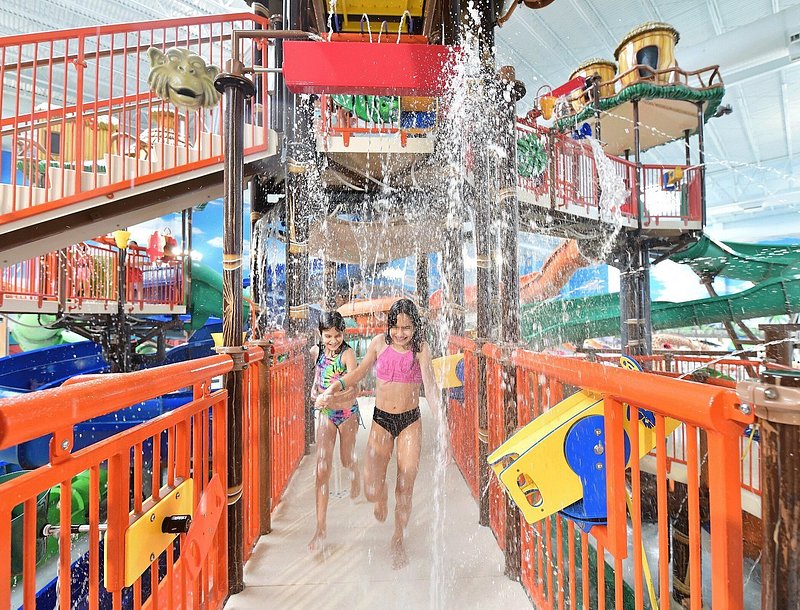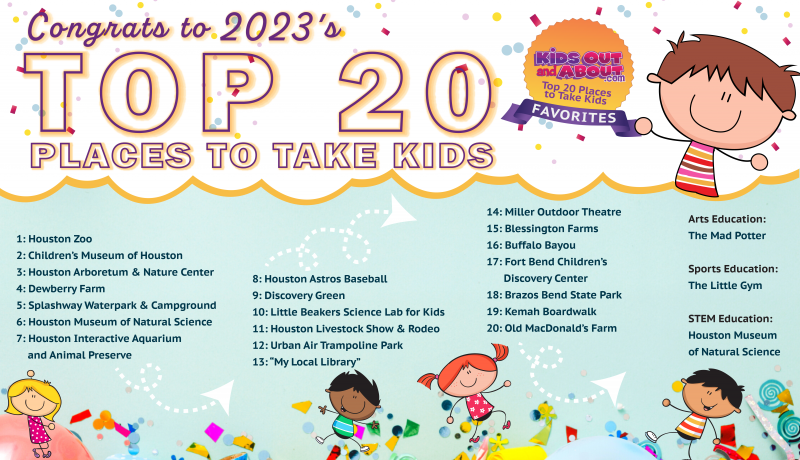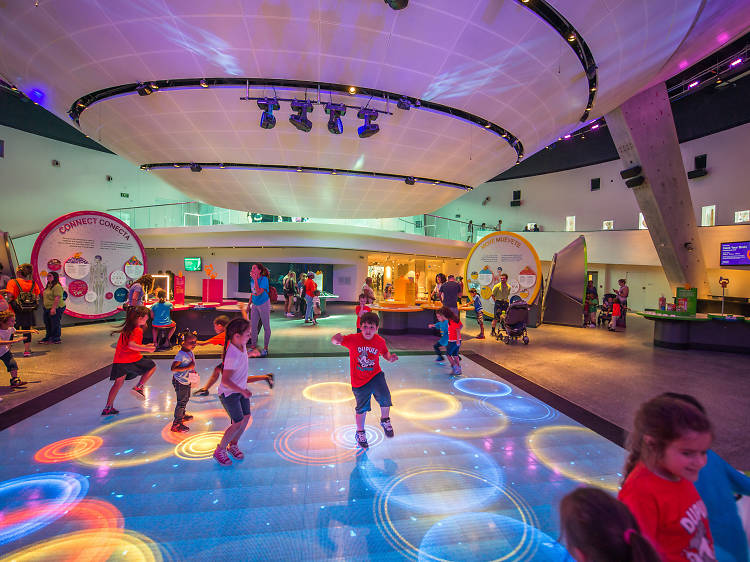Are you searching for the perfect combination of education and fun for your kids? Look no further! In this article, we will explore the top educational and fun attractions for children. Whether you’re planning a family vacation or simply looking for local options, these attractions offer exciting experiences that ignite curiosity and learning in young minds. From interactive science museums to outdoor adventure parks, there’s something for every child’s interests and age group. Let’s embark on a journey of discovery and enjoyment that will leave your kids with memories to last a lifetime.

1. Museums
Museums are excellent places to visit with children as they offer a unique blend of education and entertainment. There are various types of museums to explore, each catering to different interests and subjects.
1.1 Science Museums
Science museums are a treasure trove of knowledge for young minds. These museums are designed to spark curiosity and promote scientific thinking through interactive exhibits and hands-on activities. From understanding the laws of physics to exploring the wonders of chemistry, science museums offer a wide range of educational experiences. Children can conduct experiments, participate in science shows, and discover the fascinating world of STEM (Science, Technology, Engineering, and Mathematics) in an engaging and enjoyable way.
1.2 Art Museums
Art museums provide a fantastic opportunity for children to appreciate and learn about various artistic styles, techniques, and historical periods. By exposing them to different forms of art, children can develop their creative thinking, visual literacy, and cultural awareness. Art museums often offer guided tours specifically designed for young visitors, interactive exhibits, and art workshops where children can unleash their imagination and create their artworks. Exploring art can be an inspiring and enriching experience for children of all ages.
1.3 History Museums
History museums take you on a journey through time, allowing children to gain a deeper understanding of the past. Through fascinating exhibits, artifacts, and multimedia presentations, history museums bring historical events to life. Children can immerse themselves in different eras, witness pivotal moments, and learn about the lives of important figures. Some history museums also offer interactive displays, where children can dress up in period costumes or engage in historical reenactments, making the learning experience even more immersive and exciting.
2. Zoos
Zoos are not only entertaining but also serve as educational hubs, fostering an appreciation for wildlife and nature in children. They offer a unique opportunity to observe animals up close and learn about their habitats, behaviors, and conservation efforts.
2.1 Animal Exhibits
One of the main highlights of visiting a zoo is the chance to see a wide variety of animals from all around the world. From fierce lions and playful dolphins to mysterious reptiles and colorful birds, zoos provide a platform for children to marvel at the diversity of the animal kingdom. Many zoos have well-designed exhibits that mimic the natural habitats of the animals, creating an immersive experience that allows children to gain a deeper understanding of different ecosystems.
2.2 Educational Programs
Zoos often offer educational programs, such as talks, presentations, and feeding sessions, where children can learn about the animals in a more structured and informative setting. Experts and zookeepers share their knowledge about the animals’ biology, conservation status, and the challenges they face in their natural habitats. These programs provide valuable insights into wildlife conservation and the importance of protecting endangered species, inspiring children to become more environmentally conscious and empathetic towards animals.
2.3 Interactive Encounters
Many zoos also offer interactive encounters, allowing children to get closer to certain animals under the guidance of trained professionals. These encounters may include feeding giraffes, petting stingrays, or even walking alongside a zookeeper as they care for the animals. These hands-on experiences not only create lasting memories but also provide children with the opportunity to engage directly with the animal world, fostering a sense of respect and appreciation for all living creatures.
3. Aquariums
Aquariums are fascinating places that allow children to explore the wonders of the underwater world. They provide a unique glimpse into marine life and offer educational experiences that promote environmental awareness and conservation.
3.1 Marine Life Exhibits
Aquariums house a vast array of marine species, ranging from enchanting tropical fish to majestic sharks and graceful sea turtles. Through well-designed exhibits, children can observe these underwater creatures in their natural habitats, gaining insight into their behaviors, adaptations, and the delicate balance of marine ecosystems. Aquariums often recreate coral reefs, mangroves, and other underwater environments, providing an immersive experience that transports visitors to the depths of the ocean.
3.2 Behind-the-Scenes Tours
Some aquariums offer behind-the-scenes tours, giving children the opportunity to explore areas not typically accessible to the general public. These tours provide an in-depth understanding of how aquariums operate, including the intricate systems that maintain the health and well-being of the marine life. Children can witness the care and dedication of the aquarium staff, gaining a behind-the-scenes perspective on the various aspects of marine conservation and rehabilitation efforts.
3.3 Touch Pools
One of the highlights of visiting an aquarium is the chance to interact with marine creatures through touch pools. These shallow tanks contain marine organisms, such as starfish, sea anemones, and hermit crabs, that children can touch and observe up close. Touch pools provide a hands-on learning experience, allowing children to feel the unique textures and shapes of marine life, while also teaching them about the importance of respecting and protecting these delicate creatures in their natural habitats.
4. Planetariums
Planetariums offer a captivating journey through the vast expanse of space, providing children with an opportunity to explore the wonders of the universe.
4.1 Astronomy Shows
Planetariums often feature awe-inspiring astronomy shows that simulate the night sky, showcasing celestial bodies, constellations, and other astronomical phenomena. Through visually stunning presentations, children can learn about the planets, stars, galaxies, and the mysteries of the universe. These shows are not only educational but also ignite a sense of wonder and curiosity about the universe, inspiring children to further explore and understand the complexities of space.
4.2 Virtual Space Exploration
Some planetariums offer virtual space exploration experiences, taking children on simulated journeys through our solar system and beyond. With the help of advanced technology, children can visit distant planets, walk on the moon, or even travel to galaxies billions of light-years away. These virtual experiences provide an immersive and educational adventure, allowing children to visualize and comprehend the vastness and intricacies of the cosmos.
4.3 Celestial Observations
Many planetariums organize celestial observations, where children have the opportunity to observe celestial objects such as planets, stars, and constellations through telescopes. Guided by experts, children learn how to locate and identify different celestial bodies, unraveling the mysteries of the night sky. Celestial observations allow children to develop an appreciation for the beauty and vastness of the universe while nurturing their curiosity about the cosmos.

5. Science Centers
Science centers offer hands-on interactive exhibits and activities, making them a thrilling and educational destination for children. They provide a range of experiences that foster scientific thinking, creativity, and problem-solving skills.
5.1 Hands-on Exhibits
Science centers typically feature a wide variety of hands-on exhibits that cover various scientific disciplines. Children can explore physics principles through interactive displays, experiment with electricity and magnetism, or delve into the world of biology through engaging exhibits. These interactive displays allow children to actively participate in the learning process, encouraging them to ask questions, hypothesize, and experiment with different concepts.
5.2 STEM Workshops
Many science centers offer STEM workshops specifically designed to engage children in hands-on activities related to science, technology, engineering, and mathematics. These workshops provide a platform for children to apply scientific concepts to real-world problems, fostering critical thinking and problem-solving skills. Whether it’s building a bridge, programming robots, or conducting chemistry experiments, STEM workshops offer a dynamic and immersive learning experience that promotes creativity and innovation.
5.3 Interactive Demonstrations
Science centers often host interactive demonstrations, where experts showcase scientific concepts through captivating experiments and shows. Children can witness chemical reactions, discover the principles of light and sound, or even participate in physics-related demonstrations. These interactive demonstrations not only entertain but also explain complex scientific phenomena in a simplified and engaging manner, making science more accessible and enjoyable for children.
6. Children’s Museums
Designed specifically for young visitors, children’s museums offer a wide range of exhibits and activities tailored to inspire learning, creativity, and imaginative play.
6.1 Role-playing Opportunities
Children’s museums often provide role-playing opportunities, where children can step into the shoes of different professionals and explore various career paths. Whether it’s pretending to be a doctor, firefighter, or chef, these exhibits encourage imaginative play while also introducing children to different professions and their associated responsibilities. Role-playing exhibits promote social skills, empathy, and problem-solving abilities, allowing children to explore their interests and aspirations in a fun and interactive environment.
6.2 Educational Play Areas
Children’s museums usually incorporate educational play areas that focus on specific subjects or concepts. These areas may include construction zones, water play stations, or even mini laboratories, allowing children to engage in hands-on activities and experiments. By combining play and education, children’s museums create an environment that encourages exploration, discovery, and the development of various skills, such as fine motor skills, cognitive abilities, and social interaction.
6.3 Artistic Workshops
To nurture creativity and artistic expression, children’s museums often offer workshops and exhibits focused on art. Children can engage in various art forms, such as painting, sculpting, or drawing, with access to different materials and tools. Artistic workshops encourage self-expression, imagination, and aesthetic appreciation, allowing children to develop their artistic abilities and explore different artistic styles. These workshops often emphasize process over product, promoting individuality and instilling a sense of accomplishment in young artists.

7. Historical Sites
Historical sites provide children with a tangible connection to the past, offering immersive experiences that bring history to life.
7.1 Living History Reenactments
Certain historical sites organize living history reenactments, where actors dressed in period costumes recreate scenes from the past. Children can witness firsthand what life was like during different historical periods, observing traditional crafts, interacting with historical figures, and experiencing the sights, sounds, and smells of a bygone era. Living history reenactments provide a multi-sensory experience that transports children back in time, fostering a deeper understanding and appreciation for history.
7.2 Guided Tours of Historic Buildings
Many historical sites offer guided tours of well-preserved buildings, such as castles, stately homes, or ancient ruins. These tours provide children with the opportunity to explore architectural marvels and understand the historical significance of these structures. Expert guides share intriguing stories and facts, allowing children to visualize the lives of people who lived in these buildings and gain insights into the social, cultural, and political contexts of different periods in history.
7.3 Archaeological Excavations
For children interested in archaeology and ancient civilizations, some historical sites offer the opportunity to observe ongoing archaeological excavations. Guided by archaeologists, children can witness the process of unearthing artifacts, piecing together fragments of history, and uncovering clues about the past. This hands-on experience allows children to appreciate the meticulous work involved in archaeological research, stimulating their curiosity about ancient civilizations and the mysteries they hold.
8. Botanical Gardens
Botanical gardens provide a serene and educational environment where children can explore the beauty and diversity of plants while learning about their ecological importance.
8.1 Guided Garden Tours
Botanical gardens often offer guided tours that take children on a journey through different plant collections and themed gardens. Expert guides provide insights into the various plant species, their unique characteristics, and the role they play in ecological systems. Children can learn about the importance of plants in producing oxygen, supporting wildlife, and providing food and medicine. Guided garden tours also educate children on the importance of conservation and the need to protect and preserve plant biodiversity.
8.2 Botanical Workshops
Some botanical gardens organize workshops that focus on various aspects of botany and plant science. Children can engage in activities such as seed planting, flower pressing, or even creating botanical art. These workshops promote an understanding of plant anatomy, growth cycles, and ecological relationships. Children can develop their green thumbs, learn about sustainable gardening practices, and discover the joys of nurturing and caring for plants.
8.3 Plant Identification Activities
Botanical gardens often provide opportunities for children to engage in plant identification activities. These activities may involve scavenger hunts, where children are given a list of plants to find and identify using provided guidebooks or informational signs. By honing their observation skills and learning to differentiate between various plant species, children can develop a deeper appreciation for the diversity and beauty of the plant kingdom. Plant identification activities also encourage children to explore botanical gardens independently and discover their own favorite plant species.

9. Theme Parks
Theme parks aren’t just about thrilling rides and entertainment; they also offer educational shows, exhibits, and attractions that engage children in learning while having fun.
9.1 Educational Shows and Demonstrations
Many theme parks incorporate educational shows and demonstrations into their entertainment offerings. These shows may cover subjects such as animal conservation, environmental awareness, or scientific concepts. Through captivating performances and interactive elements, children can learn about important issues in a fun and engaging way. Whether it’s a high-flying bird show or a live science experiment demonstration, educational shows at theme parks provide an opportunity for children to learn while being entertained.
9.2 STEM-Themed Rides
Some theme parks feature rides and attractions with a STEM (Science, Technology, Engineering, and Mathematics) focus. These rides often incorporate elements of physics, engineering, or technology, allowing children to experience scientific principles in action. For example, roller coasters that simulate gravitational forces, water rides that demonstrate hydrodynamics, or virtual reality experiences that showcase cutting-edge technology. STEM-themed rides combine excitement with educational value, inspiring children to explore and appreciate the wonders of science and technology.
9.3 Wildlife Exhibits
Theme parks sometimes include wildlife exhibits, where children can see and learn about various animal species up close. These exhibits provide opportunities to observe and appreciate animals from different parts of the world, offering educational information about their habitats, behaviors, and conservation efforts. Some theme parks also offer interactive encounters or educational presentations where children can get closer to certain animals and even learn how they are cared for. These wildlife exhibits create a valuable connection between children and the natural world, fostering a sense of responsibility and respect for all living creatures.
10. National Parks
National parks are nature’s playgrounds, offering a wide range of educational and outdoor activities that allow children to explore the beauty and wonders of the natural world.
10.1 Nature Trails and Hiking
One of the best ways to experience national parks is by exploring the various nature trails and hiking routes they offer. These trails allow children to immerse themselves in nature, observing different plants, animals, and geological formations. Guided by interpretive signs or park rangers, children can learn about the park’s ecosystems, geological processes, and the importance of biodiversity. Nature trails and hiking activities promote physical fitness, environmental awareness, and a deep appreciation for the natural world.
10.2 Ranger-Led Programs
National parks often organize ranger-led programs specifically tailored for children. These programs include informative talks, guided walks, and hands-on activities that delve into the park’s unique features and promote ecological understanding. Park rangers share their knowledge about the park’s flora, fauna, and geology, allowing children to learn about the local ecosystem and the efforts taken to conserve it. Ranger-led programs provide an opportunity for children to engage with experts and gain insights into the ecological significance of national parks.
10.3 Wildlife Spotting
National parks are home to a vast array of wildlife, and children can have the opportunity to spot various species in their natural habitats. Whether it’s observing bears fishing for salmon in a river or birdwatching at a marsh, wildlife spotting encourages patience, observation skills, and empathy towards animals. Some national parks offer guided wildlife viewing tours or designated viewing areas, allowing children to witness animals safely and responsibly. These experiences instill a sense of awe and respect for the natural world while nurturing a love for wildlife and conservation.
In conclusion, there are numerous educational and fun attractions for children to visit. Museums, zoos, aquariums, planetariums, science centers, children’s museums, historical sites, botanical gardens, theme parks, and national parks all offer unique experiences that engage children’s minds, spark their curiosity, and provide valuable learning opportunities. By exploring these attractions, children can cultivate a love for different subjects, develop essential skills, and foster a lifelong passion for learning. So, pack your bags, embark on an educational adventure with your children, and create lasting memories together while expanding their knowledge and horizons.

